Erica Vetsch's Blog, page 136
May 29, 2018
Monday Holiday Reality Strikes Seekerville!
Discovery One:
When you close Seekerville for a Monday holiday without a Tuesday guest, then you have a TWO DAY GAP.
I am so totally not a fan of two-day gaps, so I'm here to just throw something down...
And to do that, let's talk historical romances.
I had just gotten a lovely historical proposal done when LIH announced they were closing last year. I could have sought other publishers, but what a perfect opportunity to create a series and release it myself in the 2018/2019 winter season!
So that's what I'm doing behind the scenes. And it's so much fun to see these stories come alive and delve into the lives of my South Dakota town "Second Chance" South Dakota, circa 1887- and on...
 Historical research doesn't begin on the plains of the prairie... for me it begins here, on what used to be the shores of the New York Harbor. This is the cemetery at Trinity Episcopal Church in Lower Manhattan.
Historical research doesn't begin on the plains of the prairie... for me it begins here, on what used to be the shores of the New York Harbor. This is the cemetery at Trinity Episcopal Church in Lower Manhattan.
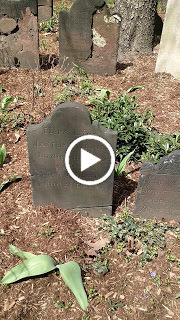 I'm hoping the video comes through this time.... If not, here is what it says: "Here lies James Palmer who died the twelfth of April, 1802. Aged six months, fifteen days."
I'm hoping the video comes through this time.... If not, here is what it says: "Here lies James Palmer who died the twelfth of April, 1802. Aged six months, fifteen days."
Old graveyards are filled with story. Lost children. Women lost in childbirth. Disease. War. But mostly filled with these young people, a "first" family wiped out by illness only to have a similar thing happen to the "second" family. Raising children past age five was a milestone! This cemetery used to lie at harbor's edge but island growth via subway tunnels has "pushed" it several blocks back. But here it lies, in the middle of Wall Street and Big Business and Fancy Finance. A small spot that harkens back to our beginnings... to those first brave souls that ventured across the seas for religious freedom.
We are so blessed by these times in so many ways. Medical care and vaccinations and urgent care and well-baby visits... and interventions for struggling children! What a time!
But as we can see on the weekly/daily/24 hour news, our children are suffering in very different ways. Why is that? Why do children hurt, harm or waylay others?
Why would children bring weapons to school?
Why do we have so many young people needing mental health interventions?
I don't have answers to these questions. As an author, though, each varying set of circumstances brings forth the possibility of stories... of reasoning why we do what we do.
In the past parents valued the sanctity of their children because they buried so many babies.
Have we lost touch with that? With our faith? With moral standards?
While moral standards had strict parameters that could be stifling (think Jane Austen to modern times) those standards helped enforce rules of acceptable behavior.
When did we change those rules and how does that affect the presentation of a contemporary story?
Just some stuff to contemplate on a day with no carry over!
Coffee is on!
It's farm season and yard upkeep time. The snow is gone and has revealed SO MANY THINGS to do!
But I'll stop in to chat with youse and we can talk about old times... what made people work so hard to better themselves? To cross an ocean in a wooden boat, then a country in a wooden wagon.
Could we do that today? Or maybe the better question is would we? :)
I hope you look forward to winter's historicals being released... because I know I sure do!
 Multi-published inspirational author Ruth Logan Herne lives on a pumpkin farm in upstate New York with a whole bunch of big and small people, a couple of dogs, a few cats, mini donkeys and way too many chickens! She writes beautiful stories with unforgettable characters that touch the heart... and the soul. Find her at ruthloganherne.com and on facebook and Twitter!
Multi-published inspirational author Ruth Logan Herne lives on a pumpkin farm in upstate New York with a whole bunch of big and small people, a couple of dogs, a few cats, mini donkeys and way too many chickens! She writes beautiful stories with unforgettable characters that touch the heart... and the soul. Find her at ruthloganherne.com and on facebook and Twitter!
When you close Seekerville for a Monday holiday without a Tuesday guest, then you have a TWO DAY GAP.
I am so totally not a fan of two-day gaps, so I'm here to just throw something down...
And to do that, let's talk historical romances.
I had just gotten a lovely historical proposal done when LIH announced they were closing last year. I could have sought other publishers, but what a perfect opportunity to create a series and release it myself in the 2018/2019 winter season!
So that's what I'm doing behind the scenes. And it's so much fun to see these stories come alive and delve into the lives of my South Dakota town "Second Chance" South Dakota, circa 1887- and on...
 Historical research doesn't begin on the plains of the prairie... for me it begins here, on what used to be the shores of the New York Harbor. This is the cemetery at Trinity Episcopal Church in Lower Manhattan.
Historical research doesn't begin on the plains of the prairie... for me it begins here, on what used to be the shores of the New York Harbor. This is the cemetery at Trinity Episcopal Church in Lower Manhattan. I'm hoping the video comes through this time.... If not, here is what it says: "Here lies James Palmer who died the twelfth of April, 1802. Aged six months, fifteen days."
I'm hoping the video comes through this time.... If not, here is what it says: "Here lies James Palmer who died the twelfth of April, 1802. Aged six months, fifteen days."Old graveyards are filled with story. Lost children. Women lost in childbirth. Disease. War. But mostly filled with these young people, a "first" family wiped out by illness only to have a similar thing happen to the "second" family. Raising children past age five was a milestone! This cemetery used to lie at harbor's edge but island growth via subway tunnels has "pushed" it several blocks back. But here it lies, in the middle of Wall Street and Big Business and Fancy Finance. A small spot that harkens back to our beginnings... to those first brave souls that ventured across the seas for religious freedom.
We are so blessed by these times in so many ways. Medical care and vaccinations and urgent care and well-baby visits... and interventions for struggling children! What a time!
But as we can see on the weekly/daily/24 hour news, our children are suffering in very different ways. Why is that? Why do children hurt, harm or waylay others?
Why would children bring weapons to school?
Why do we have so many young people needing mental health interventions?
I don't have answers to these questions. As an author, though, each varying set of circumstances brings forth the possibility of stories... of reasoning why we do what we do.
In the past parents valued the sanctity of their children because they buried so many babies.
Have we lost touch with that? With our faith? With moral standards?
While moral standards had strict parameters that could be stifling (think Jane Austen to modern times) those standards helped enforce rules of acceptable behavior.
When did we change those rules and how does that affect the presentation of a contemporary story?
Just some stuff to contemplate on a day with no carry over!
Coffee is on!
It's farm season and yard upkeep time. The snow is gone and has revealed SO MANY THINGS to do!
But I'll stop in to chat with youse and we can talk about old times... what made people work so hard to better themselves? To cross an ocean in a wooden boat, then a country in a wooden wagon.
Could we do that today? Or maybe the better question is would we? :)
I hope you look forward to winter's historicals being released... because I know I sure do!
 Multi-published inspirational author Ruth Logan Herne lives on a pumpkin farm in upstate New York with a whole bunch of big and small people, a couple of dogs, a few cats, mini donkeys and way too many chickens! She writes beautiful stories with unforgettable characters that touch the heart... and the soul. Find her at ruthloganherne.com and on facebook and Twitter!
Multi-published inspirational author Ruth Logan Herne lives on a pumpkin farm in upstate New York with a whole bunch of big and small people, a couple of dogs, a few cats, mini donkeys and way too many chickens! She writes beautiful stories with unforgettable characters that touch the heart... and the soul. Find her at ruthloganherne.com and on facebook and Twitter!
Published on May 29, 2018 04:06
May 27, 2018
Seekerville is Closed Today

Seekerville is closed as we pause for Memorial Day, a federal holiday in the United States established to remember the men and women who died while serving in our country’s armed forces.
Please join us again tomorrow!
Published on May 27, 2018 21:05
May 25, 2018
Weekend Edition

If you are not familiar with our giveaway rules, take a minute to read them here. It keeps us all happy! All winners should send their name, address, and phone number to claim prizes. Note our new email address and please send your emails to Seekerville2@gmail.com

Monday: Jan Drexler gave us some ideas for mining our family trees for story ideas. The winner of a copy of "The Amish Nanny's Sweetheart" is Bettie Boswell! Congratulations, Bettie!
Tuesday: Toni Shiloh hung out with us on Tuesday, talking about diversity in writing... and the winner of an e-copy of "Returning Home" is Kiersti Giron! Congratulations, Kiersti!
Wednesday: Melanie Dickerson continued her Conflict and Tension series helping us answer the questions: Are you having trouble coming up with enough conflict in your current WIP, have you mined your characters' worst fears? Their goals and motivations? Their childhood scars and traumatic events? Check out her Regency series, too. They're on sale this month!!
Friday: Pam Hillman led us through the process of writing seamless transitions from scene to scene. Smoothing out the rough edges. A post every writer needs to read!

Monday: Happy Memorial Day!!
Wednesday: Laurie Schnebly Campbell is returning! She'll bring us "Selling Without Bragging," a post on the editor/agent pitch. She'll also be offering free registration to her class Perfecting Your Pitch to one luck commenter! Friday: Gabrielle Meyer will be chatting with us about how to keep those creative juices flowing. Stop by and tell her about your creative pursuits and what inspires you!

Ruthy is determined not to be sighted this week except for the lovely little Memorial Day Parade in her hometown where she'll wave flags with a bunch of cute kids and stand for the flag and the veterans and the local sheriff's deputies... Sometimes an un-sighted week gets more done! :)

Sunday is the last day to enter the Cowboys of Summer Blog Tour Giveaway on JustRead Publicity Tours. Cowboys of Summer is a sweet contemporary romance novella collection with stories from Mary Connealy, Lorna Seilstad, Cheryl St. John, Missy Tippens, Tina Radcliffe & Sherri Shackelford. See any familiar names there?
Published on May 25, 2018 21:00
May 24, 2018
Writing SeamlessTransitions from Scene to Scene
p.p1 {margin: 0.0px 0.0px 0.0px 0.0px; text-indent: 18.0px; font: 14.0px Cochin} p.p2 {margin: 0.0px 0.0px 0.0px 0.0px; text-indent: 18.0px; font: 14.0px Cochin; min-height: 17.0px} p.p3 {margin: 0.0px 0.0px 0.0px 0.0px; text-indent: 18.0px; font: 14.0px Cochin; color: #271d74} p.p4 {margin: 0.0px 0.0px 0.0px 0.0px; text-indent: 18.0px; font: 14.0px Cochin; color: #271d74; min-height: 17.0px} p.p5 {margin: 0.0px 0.0px 0.0px 0.0px; line-height: 30.0px; font: 14.0px Cochin; color: #271d74} p.p6 {margin: 0.0px 0.0px 0.0px 0.0px; line-height: 30.0px; font: 14.0px Cochin} p.p7 {margin: 0.0px 0.0px 0.0px 0.0px; line-height: 30.0px; font: 14.0px Cochin; min-height: 17.0px} span.s1 {font: 9.0px Cochin} span.Apple-tab-span {white-space:pre}
 Pam Hillmanwww.pamhillman.com
Pam Hillmanwww.pamhillman.com
One thing that pulls me out of a story (my stories at the end of the rough draft, most of the time!) is jagged, jarring transitions. You know the ones I’m talking about.
Like when the hero and heroine are going at each other in a shouting match. Then, suddenly, in the next scene, she’s asking politely if he wants a cup of coffee without a believable transition.
Or it’s morning, and then in the next scene, your heroine is getting ready for bed, and the passage of time isn’t mentioned at all.
It’s okay to write disjointed scenes in the first draft, but in rewrites, the transitions need to be seamless, with neat, clean stitches.
Let’s look at some before and after examples from my Natchez Trace series to see if we can make these transitions from scene to scene seamless. (Say that three times fast!)
And, I’ll just go ahead now and apologize for the long post. But, the bulk of today’s post is excerpts, and it was necessary to include those to show the changes.
Excerpt from The Promise of Breeze Hill
Setup: My characters are traveling on the Natchez Trace, a dangerous stretch of road in the 18th century. They’re discussing what might happen if highwaymen attack. Connor (my hero) is new to the area, and Mr. Wainwright is the leader of the group of travelers. This except is the end of the scene.
1st draft: [Mr. Wainwright is speaking.] “Men of this ilk have no regard for human life, not even their own most of the time. They show no mercy. If you get one of them in your sights, shoot him. You won’t get a second chance.”Connor nodded. He’d been in similar circumstances. “Good then. Just pray that we won’t have to fight the ruffians this time.” Wainwright moved up the line, speaking to each man in turn. He didn’t spend as much time with each man as he’d spent with Connor. Most of the men were seasoned drovers along the trace, and they knew what to expect and when to expect it.
Final draft:“Men of this ilk have no regard for human life, not even their own most of the time. They show no mercy. If you get one of them in your sights, shoot him. You won’t get a second chance.”Connor nodded. He’d been in similar circumstances a few times and didn’t have to be told twice. [End of Excerpt]
As you can see, I completely cut out the last paragraph in the rewrite of the above scene. I end with Connor’s acceptance of the likelihood of an attack. I’m not going to include any of it, but the next scene is in the villain’s POV as he and his men watch the travelers and prepare to attack. Then we go back to Connor’s POV as they’re riding down this trail and the reader already knows that the bad guys are watching. This excerpt is the beginning of the scene.
1st draft:Other than the jingle of harness, the occasional snort of a horse, and the swish-swish of tails beating off horseflies, all was quiet. The soft dirt drowned out the clop of horse’s hooves and well-oiled wheels as they made slow progress toward home. The man up ahead flinched, then slapped at a horsefly on his shoulder. Connor rolled his shoulders in sympathy. Those monsters stung, and they didn’t respect man over beast. They’d draw blood from either if the opportunity arose.He hunkered down, his elbows resting on his knees, his gaze rimming the edges of the loamy banks that rose high on both sides of him. A small cascade of loose soil tumbled down the bank.
Revised draft:The man up ahead flinched, reached back and slapped at a horsefly on his shoulder. Connor rolled his shoulders in sympathy. Those monsters stung, and they didn’t respect man over beast. They’d draw blood from either if the opportunity arose. Other than the jingle of harness, the occasional snort of a horse, and the swish-swish of tails beating off horseflies, all was quiet. The soft dirt drowned out the clop of horses’ hooves and well-oiled wheels as they made slow progress toward home. Slower than usual in deference to Wainwright’s injuries.He hunkered down, elbows resting on his knees, his gaze rimming the edges of the loamy banks that rose high on both sides. A small cascade of loose soil tumbled down the bank, and he jerked to attention.He caught a glint of sunlight off metal and twisted sideways even as the the sound of a high-pitched whine swooshed by his ear. The bullet splintered the foot rest between his feet. Even as he hauled back on the reins, the man in front of him slapped his back again, but this time blood spurted through his fingers. He let out a scream of agony and toppled from the wagon, hitting the ground with a thud.[End of excerpt]
In this scene, I kept everything, I just rearranged it. I opened with the man slapping at his back (thought he’d gotten shot, didn’t you?), then Connor’s sympathy about the man being bitten by a horsefly. Then the boring plodding along, while the reader is thinking, DUCK! HIDE! RUN! After that, the loose soil catches his attention, and the man in front slaps at his back again. Except it’s not a horsefly this time.Sometimes thing fit together better if you just rearrange them a bit.
Also from The Promise of Breeze Hill
Isabella has gone to a neighboring plantation to make a desperate deal. A storm is brewing. Here’s the opening of the scene that had to be rewritten to make it flow properly and to keep the reader anchored about where she was and what she was doing there.
1st draft:The wind picked up, and Isabella swung the French doors wide, and looked out at the trees whipping in the wind. The sky toward the New Orleans was blue-gray with the mist of the ocean. Fear touched her heart.
Revised draft: [beginning of scene]Alone in Nolan’s parlor, Isabella twisted her fingers in her lap. Was she doing the right thing? She didn’t know, but she’d sat in the rocker in Leah’s sitting room in the darkest hours of the night, wrestling over little Jon’s future. There was one man who was powerful enough and close enough to Breeze Hill to offer protection for her nephew. And that man was Nolan Braxton.[Some of Isabella’s thoughts removed to keep this short…]His housekeeper, wide frightened eyes darting to the huge oaks bending and twisting in the wind, had said that he was indisposed. Isabella asked to wait out the storm, and the woman had shown her to the parlor, then quickly disappeared, muttering about devil winds and the cellar.The wind picked up, and Isabella stood, moved to the windows and pulled the heavy drapes back. The sky toward New Orleans had turned a sickly blue-gray in the hour she’d waited, and the trees whipped back and forth in a frenzy. The storm was worsening at a frightening rate.[End of excerpt]
I hope I’ve included enough of this to explain the problem with the 1st draft. It wasn’t seamless. The reader knew where she was going and could probably guess why. In the first draft, the reader would wonder why wasn’t she talking to Nolan, but I needed a reason for him to not be there at that exact moment. So, you’ll see how I sort of “backed into” the scene. She’s in his parlor, there’s a bit of the reason she’s there, and the housekeeper’s fear of the bad weather that was alluded to in a previous scene.
From The Road to Magnolia Glen:
1st draft [end of scene. Quinn’s POV]Le Bonne’s henchman lifted Kiera off the dais and pushed her toward the stairs. She stumbled again, but regained her footing. Quinn had to do something. But what? In a last ditch effort, he charged toward the stairs.Someone grabbed him by the arm. He jerked back a fist, but stopped just in time when he recognized William Wainwright.Wainwright propelled him toward the door, but Quinn jerked back. “No. I will no’ leave her.”“We’re not leaving her. Come on. We don’t have much time.”
Revised draft [end of scene. Quinn’s POV]Le Bonne’s henchman jerked Kiera off the dais and pushed her toward the stairs. She stumbled again, but regained her footing. Marchette followed, neither looking to the left or the right. Their fun at an end, the crowd returned to their drinks and their slow descent into debauchery, but Quinn stood in the shadows, his gaze watching as Kiera was led up the stairs and along the balcony.Someone tapped him on the shoulder, and he turned. Wainwright clasped him by the shirtfront, grimaced. “Sorry to do this, but—”Then he drew back and slammed a fist into Quinn’s face.[End of excerpt]
As you can see, Kiera is in a precarious position, but in the first draft, Quinn (the hero) and his companions are going to have to do some fancy footwork to rescue her. In the second draft, they still have a lot to do, but instead of reacting to the situation, they became involved IN the situation, and the Wainwright’s fist plant is to start a brawl in the tavern. A diversion, if you will.
Here’s another scene from The Road to Magnolia Glen. And this is an easy fix to anchor the reader where they are. Quinn and some of the children have been gathering scrap iron from a plantation destroyed by a tornado, and now they’ve returned home.
1st draft: Quinn spotted Isabella standing in the middle of the lane staring at the cookhouse, a sketchpad and a piece of charcoal in her hands.Revised draft: Quinn drove down the lane, Patrick, Megan, and Lizzy squished on the seat beside him, the wagon bed full of scrap metal.Isabella stood in the middle of the road in front of the cookhouse, a sketchpad and a piece of charcoal in her hands. She moved out of the way and let them pass.
Just one sentence at the beginning clues the reader in quickly that it’s Quinn’s POV and that they’ve returned to Breeze Hill.
Here’s one more small excerpt that is a good example of the passage of time. These minor, but key, character’s names have been changed, but I can assure you this isn’t my hero and heroine!
1st draft [beginning of scene.]Alone, Charles sat in a rocker in the dark staring at his wife’s bed. He’d banished them all. Thompson. His housekeeper. Even Victoria’s brother, the esteemed Reverend John Muiller had failed him.They’d let his sweet Victoria die.
Revised draftAs the sun sank in the west, dark seeped into Victoria’s room. Refusing anyone else entrance, Charles sat in a rocker staring at his wife’s bed.He’d banished them all. His butler. The housekeeper. Thompson. Even Victoria’s brother, the esteemed Reverend John Muiller.One by one, they’d all failed him.And they’d let his sweet Victoria die.[End of excerpt]
Several hours had passed from the last scene, so I need the reader to be anchored in the time. “As the sun sank…” did the trick.
So, there you go. A few examples of my attempts to create smooth transitions that keep readers firmly rooted in the story. So, how do you know if your scenes have some rough edges?If the transition from scene to scene jars you, the author, it’s likely going to jar the reader. So, you have to be willing to rewrite that cool beginning or ending to some of your scenes.Or in some cases, you might have to add a few words, or just delete a few. Sometimes it’s an easy fix. And sometimes it’s really hard, and you have to rework an entire scene. That happened with my first example from The Road to Magnolia Glen. But the rewrite was much, much cooler!And cooler is always better, don’t you think?
Authors, I’d love to hear your stories of smoothing out the rough edges and transitioning from scene to scene. And, readers, did you even have a clue that your authors obsess over this kind of thing?
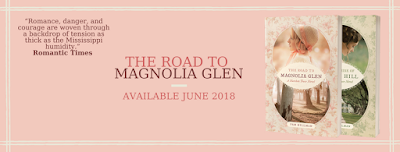
The Road to Magnolia Glen Coming June 5th to ... well, EVERYWHERE!Click here to pre-order your copy
 Pam Hillmanwww.pamhillman.com
Pam Hillmanwww.pamhillman.comOne thing that pulls me out of a story (my stories at the end of the rough draft, most of the time!) is jagged, jarring transitions. You know the ones I’m talking about.
Like when the hero and heroine are going at each other in a shouting match. Then, suddenly, in the next scene, she’s asking politely if he wants a cup of coffee without a believable transition.
Or it’s morning, and then in the next scene, your heroine is getting ready for bed, and the passage of time isn’t mentioned at all.
It’s okay to write disjointed scenes in the first draft, but in rewrites, the transitions need to be seamless, with neat, clean stitches.
Let’s look at some before and after examples from my Natchez Trace series to see if we can make these transitions from scene to scene seamless. (Say that three times fast!)
And, I’ll just go ahead now and apologize for the long post. But, the bulk of today’s post is excerpts, and it was necessary to include those to show the changes.
Excerpt from The Promise of Breeze Hill
Setup: My characters are traveling on the Natchez Trace, a dangerous stretch of road in the 18th century. They’re discussing what might happen if highwaymen attack. Connor (my hero) is new to the area, and Mr. Wainwright is the leader of the group of travelers. This except is the end of the scene.
1st draft: [Mr. Wainwright is speaking.] “Men of this ilk have no regard for human life, not even their own most of the time. They show no mercy. If you get one of them in your sights, shoot him. You won’t get a second chance.”Connor nodded. He’d been in similar circumstances. “Good then. Just pray that we won’t have to fight the ruffians this time.” Wainwright moved up the line, speaking to each man in turn. He didn’t spend as much time with each man as he’d spent with Connor. Most of the men were seasoned drovers along the trace, and they knew what to expect and when to expect it.
Final draft:“Men of this ilk have no regard for human life, not even their own most of the time. They show no mercy. If you get one of them in your sights, shoot him. You won’t get a second chance.”Connor nodded. He’d been in similar circumstances a few times and didn’t have to be told twice. [End of Excerpt]
As you can see, I completely cut out the last paragraph in the rewrite of the above scene. I end with Connor’s acceptance of the likelihood of an attack. I’m not going to include any of it, but the next scene is in the villain’s POV as he and his men watch the travelers and prepare to attack. Then we go back to Connor’s POV as they’re riding down this trail and the reader already knows that the bad guys are watching. This excerpt is the beginning of the scene.
1st draft:Other than the jingle of harness, the occasional snort of a horse, and the swish-swish of tails beating off horseflies, all was quiet. The soft dirt drowned out the clop of horse’s hooves and well-oiled wheels as they made slow progress toward home. The man up ahead flinched, then slapped at a horsefly on his shoulder. Connor rolled his shoulders in sympathy. Those monsters stung, and they didn’t respect man over beast. They’d draw blood from either if the opportunity arose.He hunkered down, his elbows resting on his knees, his gaze rimming the edges of the loamy banks that rose high on both sides of him. A small cascade of loose soil tumbled down the bank.
Revised draft:The man up ahead flinched, reached back and slapped at a horsefly on his shoulder. Connor rolled his shoulders in sympathy. Those monsters stung, and they didn’t respect man over beast. They’d draw blood from either if the opportunity arose. Other than the jingle of harness, the occasional snort of a horse, and the swish-swish of tails beating off horseflies, all was quiet. The soft dirt drowned out the clop of horses’ hooves and well-oiled wheels as they made slow progress toward home. Slower than usual in deference to Wainwright’s injuries.He hunkered down, elbows resting on his knees, his gaze rimming the edges of the loamy banks that rose high on both sides. A small cascade of loose soil tumbled down the bank, and he jerked to attention.He caught a glint of sunlight off metal and twisted sideways even as the the sound of a high-pitched whine swooshed by his ear. The bullet splintered the foot rest between his feet. Even as he hauled back on the reins, the man in front of him slapped his back again, but this time blood spurted through his fingers. He let out a scream of agony and toppled from the wagon, hitting the ground with a thud.[End of excerpt]
In this scene, I kept everything, I just rearranged it. I opened with the man slapping at his back (thought he’d gotten shot, didn’t you?), then Connor’s sympathy about the man being bitten by a horsefly. Then the boring plodding along, while the reader is thinking, DUCK! HIDE! RUN! After that, the loose soil catches his attention, and the man in front slaps at his back again. Except it’s not a horsefly this time.Sometimes thing fit together better if you just rearrange them a bit.
Also from The Promise of Breeze Hill
Isabella has gone to a neighboring plantation to make a desperate deal. A storm is brewing. Here’s the opening of the scene that had to be rewritten to make it flow properly and to keep the reader anchored about where she was and what she was doing there.
1st draft:The wind picked up, and Isabella swung the French doors wide, and looked out at the trees whipping in the wind. The sky toward the New Orleans was blue-gray with the mist of the ocean. Fear touched her heart.
Revised draft: [beginning of scene]Alone in Nolan’s parlor, Isabella twisted her fingers in her lap. Was she doing the right thing? She didn’t know, but she’d sat in the rocker in Leah’s sitting room in the darkest hours of the night, wrestling over little Jon’s future. There was one man who was powerful enough and close enough to Breeze Hill to offer protection for her nephew. And that man was Nolan Braxton.[Some of Isabella’s thoughts removed to keep this short…]His housekeeper, wide frightened eyes darting to the huge oaks bending and twisting in the wind, had said that he was indisposed. Isabella asked to wait out the storm, and the woman had shown her to the parlor, then quickly disappeared, muttering about devil winds and the cellar.The wind picked up, and Isabella stood, moved to the windows and pulled the heavy drapes back. The sky toward New Orleans had turned a sickly blue-gray in the hour she’d waited, and the trees whipped back and forth in a frenzy. The storm was worsening at a frightening rate.[End of excerpt]
I hope I’ve included enough of this to explain the problem with the 1st draft. It wasn’t seamless. The reader knew where she was going and could probably guess why. In the first draft, the reader would wonder why wasn’t she talking to Nolan, but I needed a reason for him to not be there at that exact moment. So, you’ll see how I sort of “backed into” the scene. She’s in his parlor, there’s a bit of the reason she’s there, and the housekeeper’s fear of the bad weather that was alluded to in a previous scene.
From The Road to Magnolia Glen:
1st draft [end of scene. Quinn’s POV]Le Bonne’s henchman lifted Kiera off the dais and pushed her toward the stairs. She stumbled again, but regained her footing. Quinn had to do something. But what? In a last ditch effort, he charged toward the stairs.Someone grabbed him by the arm. He jerked back a fist, but stopped just in time when he recognized William Wainwright.Wainwright propelled him toward the door, but Quinn jerked back. “No. I will no’ leave her.”“We’re not leaving her. Come on. We don’t have much time.”
Revised draft [end of scene. Quinn’s POV]Le Bonne’s henchman jerked Kiera off the dais and pushed her toward the stairs. She stumbled again, but regained her footing. Marchette followed, neither looking to the left or the right. Their fun at an end, the crowd returned to their drinks and their slow descent into debauchery, but Quinn stood in the shadows, his gaze watching as Kiera was led up the stairs and along the balcony.Someone tapped him on the shoulder, and he turned. Wainwright clasped him by the shirtfront, grimaced. “Sorry to do this, but—”Then he drew back and slammed a fist into Quinn’s face.[End of excerpt]
As you can see, Kiera is in a precarious position, but in the first draft, Quinn (the hero) and his companions are going to have to do some fancy footwork to rescue her. In the second draft, they still have a lot to do, but instead of reacting to the situation, they became involved IN the situation, and the Wainwright’s fist plant is to start a brawl in the tavern. A diversion, if you will.
Here’s another scene from The Road to Magnolia Glen. And this is an easy fix to anchor the reader where they are. Quinn and some of the children have been gathering scrap iron from a plantation destroyed by a tornado, and now they’ve returned home.
1st draft: Quinn spotted Isabella standing in the middle of the lane staring at the cookhouse, a sketchpad and a piece of charcoal in her hands.Revised draft: Quinn drove down the lane, Patrick, Megan, and Lizzy squished on the seat beside him, the wagon bed full of scrap metal.Isabella stood in the middle of the road in front of the cookhouse, a sketchpad and a piece of charcoal in her hands. She moved out of the way and let them pass.
Just one sentence at the beginning clues the reader in quickly that it’s Quinn’s POV and that they’ve returned to Breeze Hill.
Here’s one more small excerpt that is a good example of the passage of time. These minor, but key, character’s names have been changed, but I can assure you this isn’t my hero and heroine!
1st draft [beginning of scene.]Alone, Charles sat in a rocker in the dark staring at his wife’s bed. He’d banished them all. Thompson. His housekeeper. Even Victoria’s brother, the esteemed Reverend John Muiller had failed him.They’d let his sweet Victoria die.
Revised draftAs the sun sank in the west, dark seeped into Victoria’s room. Refusing anyone else entrance, Charles sat in a rocker staring at his wife’s bed.He’d banished them all. His butler. The housekeeper. Thompson. Even Victoria’s brother, the esteemed Reverend John Muiller.One by one, they’d all failed him.And they’d let his sweet Victoria die.[End of excerpt]
Several hours had passed from the last scene, so I need the reader to be anchored in the time. “As the sun sank…” did the trick.
So, there you go. A few examples of my attempts to create smooth transitions that keep readers firmly rooted in the story. So, how do you know if your scenes have some rough edges?If the transition from scene to scene jars you, the author, it’s likely going to jar the reader. So, you have to be willing to rewrite that cool beginning or ending to some of your scenes.Or in some cases, you might have to add a few words, or just delete a few. Sometimes it’s an easy fix. And sometimes it’s really hard, and you have to rework an entire scene. That happened with my first example from The Road to Magnolia Glen. But the rewrite was much, much cooler!And cooler is always better, don’t you think?
Authors, I’d love to hear your stories of smoothing out the rough edges and transitioning from scene to scene. And, readers, did you even have a clue that your authors obsess over this kind of thing?

The Road to Magnolia Glen Coming June 5th to ... well, EVERYWHERE!Click here to pre-order your copy
Published on May 24, 2018 22:00
May 22, 2018
Conflict and Tension, Part 4
Melanie Dickerson here. I hope y’all aren’t tired of my posts about Conflict and Tension, but I thought I needed to do one last discussion on HOW to add appropriate Conflict and Tension in your stories.
I have to admit, when I’m plotting, I don’t like making an outline or even filling out a worksheet on my characters or my plot. I have done the worksheet thing, and even created my own Plotting Worksheet, but I find that it doesn’t really help me. I have to work out my plot and characters in my head.
One thing I don't have trouble with is getting my characters to fall in love. The hard part is keeping them apart long enough. But that's a blog post for another time.
 I also have trouble explaining my process, or even understanding what my process is! Sigh. I’m not methodical. At all. But, having said that, I think talking about certain aspects of your characters can help you figure out ways to create and add to the conflict in your story.
I also have trouble explaining my process, or even understanding what my process is! Sigh. I’m not methodical. At all. But, having said that, I think talking about certain aspects of your characters can help you figure out ways to create and add to the conflict in your story. We’ve already talked a little about the need for conflict. No conflict equals a very boring story. Every story must have conflict and tension or there is no story. But how do you create a conflict that works for your story?
Look at what you already have. I tend to start with a character that I know a few things about, then pick a fairy tale (when I’m writing my fairy tale retellings), and just let my imagination take it wherever seems fun, interesting, and romantic.
When I was coming up with The Huntress of Thornbeck Forest, I remember I was thinking about fairy tales and familiar stories I might want to use as a basis for a story. I decided I wanted to take two stories and mesh them together. I started thinking about Robin Hood versus the person in charge of the forest. That would be instant conflict. What if my Robin Hood was a woman who was killing deer to feed the poor, and the hero was the forester who was in charge of catching poachers? And then I thought of Swan Lake. What if the forester fell in love with the “Swan” character from Swan Lake and [spoiler alert!] ended up shooting her? Just like in the Swan Lake story, the hero is in love with the heroine but doesn’t know her true identity. And then, when she’s in her alternate state—not a swan, but a poacher—he shoots her, then immediately realizes he’s shot the girl he’s in love with! Lots of angst and drama and CONFLICT!
That’s an example of something I learned from Mary Connealy many moons ago on the Seekerville blog, which is: Give the hero and heroine competing goals, or competing occupations.
So if you already know what occupation you want one of your main characters to have, then give their love interest an opposing occupation. An oil driller will fall in love with an environmentalist. A mayor will fall in love with a political protester. An aristocrat will fall in love with a poor governess (Jane Eyre). A duchess will fall in love with her betrothed’s brother (The Fairest Beauty). A margrave who disapproved of his brother falling in love with a servant will himself fall in love with a servant girl disguised as an aristocrat (The Beautiful Pretender).
I could go on and on but you get the picture.

Another way of adding conflict is to think about your main characters’ greatest fear and force them to face it. Do you know your main characters’ greatest fears? Do you know their goals? Their motivations? What happened to them when they were children that scarred them and gave them their greatest fears? This is all great stuff to use to create conflict and tension. And it’s not enough to know what their goal is. You have to know WHY that’s their goal, what their motivations are.
Does your character have trust issues? Use that. Do they have issues with rejection and abandonment? You can use that. What is their greatest strength? You can even use that, especially if their strength becomes a weakness by causing them to be prideful about that one thing. Make sure you challenge their strengths and weaknesses. You can use events, circumstances, the villain, or the other main character to do this.
As an example of the characters’ greatest fears causing conflict . . . In A Viscount’s Proposal, the conflict comes from the hero’s disapproval of the heroine, as well as her fear of marrying someone who wouldn’t feel any passion or genuine love for her, since that’s the kind of marriage her parents have. The hero’s stuffiness and arrogance, as well as his disapproval of the heroine, come from his fear of scandal—his father was embroiled in a scandal that got him killed when the hero was just a boy, which also led to his mother’s death. You can imagine their horror when, toward the middle of the story as they get to know each other, they each begin to feel an attraction for the other. Their fears are still there, so there’s lots of inner conflict now. Their trust issues also come into play, creating more tension and conflict.
So, your turn. How do you come up with conflict in your stories? If you’re having trouble coming up with enough conflict in your current WIP, have you mined their worst fears? Their goals and motivations? Their childhood scars and traumatic events? Leave a comment and let’s discuss.
If you like Regency romance with some suspense thrown in, the Regency Spies of London series is on sale, this month only, for $1.99 each.
 Get them for your Kindle
Get them for your KindleAnd if you're on Goodreads, I would love it if you would add my Aladdin retelling, The Orphan's Wish, to your Want to Read shelf!

Pre-order this Aladdin retelling! Releases June 26th.
Published on May 22, 2018 21:00
May 21, 2018
Shades of Diversity
With guest blogger Toni Shiloh!
Y’all, I can’t believe I’m here on Seekerville. I’m so excited to be rubbing virtual elbows with some great authors. Thank you, Ruth for inviting me here to speak.
When I got the invitation, I immediately began to wonder what on earth I’d talk about. It’s a little intimidating when you know so many people will be popping in to say hi. So after praying and talking to some trusted friends, I decided to go with what’s been on my heart: diversity.

The word itself is quite broad and can mean a wide range of subjects, so just so you know, I’m talking about racial diversity as well as the lack of it in the publishing world of Christian fiction. It’s been my heart from the moment I opened my laptop to write my very first story to bring diversity between the pages. In fact, I started a group blog with that thought in mind. I wanted to show the readers that books featuring people of color (poc) are out there. I wanted to show the publishing industry that the books are available and what the readers are looking for.
In my journey of bringing more diversity, I’ve had many Caucasian authors come up to me and ask if they’re qualified to write a novel with a poc hero/heroine when they aren’t one. I know that fear can debilitate a person and bring on the dreaded writer’s block, but writer friends, 9 times out of 10, you don’t even have the same occupation as your hero/heroine.
As we do with anything, we must do our research. But when it comes to writing a poc hero/heroine, I would caution you. Not about researching, for it is best to use sensitivity readers (readers who are same race as your hero/heroine to ensure no offense is made), walk in the shoes of your reader, etc. But if you aren’t friends with a diverse group of friends, how can your work reflect that?
Now I know it’s hard if you live in a town that has a low percentage of ethnic diversity, but that’s what the internet is for! I’ve met many writer friends around the world who don’t look like me. What was an initial meeting of like-minded individuals has turned into a friendship I treasure. As believers, we have an even greater call to unite with our fellow man. So please, find a friend who’s not like you. Do life with people who aren’t in the same station as you. Your world will grow organically and automatically flow into your writing.
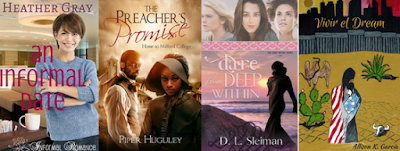
Now for my reader friends, I’ve heard so many of you ask where are the diverse characters? Why can’t I find them? I’m so glad you ask! It does my heart good to know you want the stories so many authors are putting out. Unfortunately, not all Christian fiction is labeled as such when it comes to the bookstores or even the library. Often times, when a book is featuring a poc, the book is labeled under that ethnicity. It can be difficult to weed through the sections in brick-and-mortar stores trying to find that inspirational book written by a poc or featuring a poc, but never fear.
I do have some tips.
1. Do an internet search. A quick search will pull up the bestseller lists from your eBook retailers, giving you a starting point for names. 2. Ask an author. I love helping readers find new authors and other authors do as well. We are aware you read faster than we can publish, so you need to have other authors to read. We’ll happily connect you with other authors. It’s no different when you’re searching for diversity.3. Ask a librarian. This is especially helpful. Librarians are aware of what books cross labels, like which poc writes Christian fiction or other inspirational reads.4. Ask a friend. If you’re friends with an poc avid reader, ask them! Find out who they’re reading and why. Not only will you get a recommendation, but this is a perfect opportunity to open the flow of conversation. Sometimes we’re not aware of what’s going on in the background.
So now that you know how to find them, I feel it’s important for you to know how to support authors. Not just the authors of color who are writing hero/heroines of the same vein, but for those writers stepping outside their race lines and bringing diversity to the forefront. Again, I have some tips. J
1. Review. Beth Erin did an excellent poston do or don’ts for reviewing. I’m sure you remember how helpful it was, so I won’t say more.2. Request. Request your local book store to purchase the books. Request your library to buy these books. Request your friends and family. Get the word out so that publishers and others will join the boat.3. Follow. Please follow the authors who are bringing you diverse reads. We need the support so much! When we’re down and wondering why are we writing, a like, comment, or message from you bolsters us and keeps our eyes on the prize: readers. 4. Read. Perhaps the best and most enjoyable tip yet. Read our books. Knowing readers are picking our books up from the massive selection that is out there is the best thing you could ever do. Because our hope is you will become a fan for life.

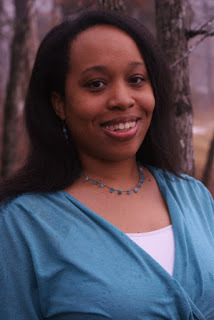 I just want to thank y’all for stopping by and listening to my heart’s cry: diversity. I’d love to offer an eBook of my novel, Returning Home. It’s book one in my Freedom Lake series. Please let me know, what’s the last book you read where the main character was a person of color? If you haven’t read one, tell me which book you’ll pick to read that features one.
I just want to thank y’all for stopping by and listening to my heart’s cry: diversity. I’d love to offer an eBook of my novel, Returning Home. It’s book one in my Freedom Lake series. Please let me know, what’s the last book you read where the main character was a person of color? If you haven’t read one, tell me which book you’ll pick to read that features one.Bio: Toni Shiloh is a wife, mom, and Christian fiction writer. Once she understood the powerful saving grace thanks to the love of Christ, she was moved to honor her Savior. She writes to bring Him glory and to learn more about His goodness.
She spends her days hanging out with her husband and their two boys. She is a member of the American Christian Fiction Writers (ACFW) and president of the Virginia Chapter.You can find her on her website at http://tonishiloh.wordpress.com.
Published on May 21, 2018 21:01
May 20, 2018
Mining Your Family Tree for Story Ideas

by Jan Drexler
We tend to think our families are nice, normal, boring people, right?Oh, sure, there’s Aunt Hattie, who was rumored to have been a flapper back in the 1920’s. Or Uncle Jack, who left home when he was fourteen and didn’t write to the folks he left behind for twenty years, after he had become a successful cattle rancher in Colorado.But other than that…

From my very first book, I have delved into the roots of my family’s past to find characters and story ideas. One part of my family has solid Amish roots dating back to the Reformation, and that branch gives me some great fodder for my Amish stories.Another branch is a bunch of ne’er-do-wells who ranged from murderers and thieves to river rats living along the banks of the Ohio River. I haven't started writing about that side of the family. Yet.In this post, I hope to give you some ideas of how you can
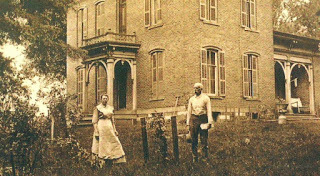
Start with the FactsThe first place to start is with your genealogy. I use Ancestry.com, but there are other websites to help you search for your ancestors. Almost every library has a genealogy room, and they are often staffed with people to help you get started. Or perhaps one of your relatives has already started a genealogy study - ask!Old photo albums are another great place to start. Hopefully, someone identified who is in the pictures!
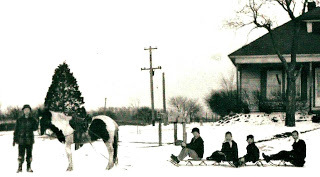
Once you plug in your grandparents’ names and where they were born, a whole new world starts opening. A simple family tree grows branches as you find the names of your great-grandparent’s siblings and their descendants, and when you dig deeper, you find details that you might have skimmed over if you weren’t looking for stories.For instance, you might find that your great-uncle had a wife who died in Ireland before he emigrated to America, and that he left three children behind. Or you might find that the person you knew as “Great-Grandma” was actually your grandfather’s foster mother, who had only stepped in to take care of the children when your great-grandparents disappeared in a snow storm…It's easy to get caught up in the "what-if's!"
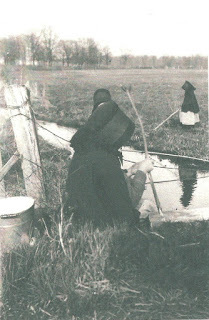
Fill in the Missing PiecesThrough studying your genealogy, you can find out when your ancestors came to America. Further searching can reveal the ship’s manifest, listing the other passengers. Census records will tell you where you ancestors lived, who lived with them, and who their neighbors were.And that’s just the tip of the iceberg!
Once you have your details – even only a few – you can let your imagination and story-building skills go to work. And remember: You’re writing fiction, not biography. Anything goes.
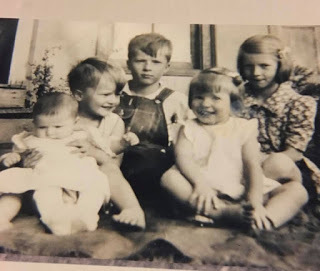
Expand the Playing FieldWhen you have your story nugget, you start expanding your knowledge of the time period and setting.Let me use an example from my own research. While working on my husband’s genealogy, I found that his great-grandfather emigrated to America from Germany in 1880, accompanied by his wife and two adult children, Barbara and Caspar…and a nine-month-old girl named Maria. Further searching revealed the name of the woman who would eventually become Caspar’s wife, who was traveling alone on the same ship.Those are the bare-bones facts, but do you see the story fodder in these details?Less than three months later, Barbara married a man twice her age who was living in Toledo. Augustus had emigrated five years earlier from the same town in Germany as Barbara’s family, so they must have known each other back then. The story’s details keep growing, don’t they?And what happened to Maria? After Barbara’s mother passed away a few years later, Augustus moved his family – including a five-year-old Maria – to a Nebraska homestead just south of Lincoln.

When I finally write this piece of family history into a story or series, I’ll research homesteading in Nebraska, ocean crossings in 1880, what the immigration experience was before Ellis Island, overland travel from New York to Toledo, and then to Nebraska.I’ll use some of my favorite resources. One is Historic Mapworks, where you can search maps from around the world for almost any time period. I have already been able to find Augustus and Barbara’s homestead using this resource.I also use Google Maps extensively. Even though the maps are contemporary, you can still learn a lot about a place through their street view and 3-D features. After I get a sense of “place” through the maps, I start looking for source materials for research. I use internet search engines to start looking for books written about my subject. For this story I would search for European immigrant’s stories and homesteader’s diaries from Nebraska. I would also search for any other books written about these subjects.
Give Your Characters Life!Once I have the setting, I start forming my characters. I use what I’ve learned in my research to create their Goals, Motivations and Conflicts. People are similar in all time periods, so while I’ll want to remain true to the culture of the time period I've chosen, my characters will have the same wants and desires that we do today.When I write this book, I think Barbara will be an interesting person to learn to know. How did her experiences shape her life? And then there’s that mystery: Whose daughter was Maria? What would she have been like as a young girl?

Dig Deep into Your RootsDon’t tell me your family is full of boring people!Think about why we write - it’s because we’re interested in people. We listen when they tell their own stories and our minds snatch the fascinating details out of the air.When you mine your family tree, you're digging for those details. Those tidbits that cause your mind to start chasing the "what-if's."Talk to your relatives. Ask them what they remember about your family. And it doesn’t have to be someone a generation or two older than you – my brother remembers stories from our family's past that I don’t, and he’s less than three years older than I am. Ask questions, then listen. What you hear just might be your next great story idea!
Have you ever mined your family tree for story ideas? Tell us about it!
One commenter will win a copy of my latest release from Love Inspired Historical, The Amish Nanny's Sweetheart. (US only please)
 Love in Plain Sight
Love in Plain Sight As nanny for her nephew, Judith Lapp’s finally part of a vibrant, joyful Amish community instead of living on the outskirts looking in. But teaching her neighbors’ Englischer farmworker to read Pennsylvania Dutch wasn’t part of her plan. And the more time she spends with Guy Hoover, the more he sparks longings for a home and family of Judith’s own.
Guy figured he would never be truly accepted by his Amish employers’ community—even though the Mast family treats him like a son. But Judith’s steadfast caring shows him that true belonging could be within his reach…if he and Judith can reconcile their very different hopes—and hearts.
Published on May 20, 2018 21:00
May 18, 2018
Weekend Edition

If you are not familiar with our giveaway rules, take a minute to read them here. It keeps us all happy! All winners should send their name, address, and phone number to claim prizes. Note our new email address and please send your emails to Seekerville2@gmail.com

Monday: Missy Tippens and Connie Mann shared about Writing What you Know...and What You Don't Know. The winners of Missy's Cowboys of Summer are Lee-Ann (Martin) Brodeur and Chanel M! The winners of Connie's Deadly Melody are MJSH and JubileeWriter!
Tuesday: Julie Lessman talked kissing!!! The winner of a paperback copy of her writer’s workbook, Romance-ology 101: Writing Romantic Tension for the Sweet and Inspirational Markets OR your choice of any of Julie's indie e-books, including her upcoming release, Love’s Silver Lining is Wilani Wahl.
Wednesday: Publishers Weekly Bestselling Author Debby Giusti talked about "My Writing Process," which led to a lot of interesting discussion about how an initial concept turns into a full-length manuscript. Debby is giving away the first two books in her Amish Protectors series, AMISH REFUGE and UNDERCOVER AMISH, along with a 2018 calendar/planner to one lucky winner. The winner of Debby's giveaway is Rose Blackard. Congrats, Rose!
Friday: Winnie Griggs discussed Layering Texture and Emotion into your writing, and provided real life examples to illustrate her point. The winner of Winnie's current release, or choice of any of her backlist, is Bettie Boswell. .

Monday: Jan Drexler will share how she mines her family tree for story and character ideas. If you think your family stories are boring, think again! You have prime story fodder right under your nose!
Tuesday: Today we welcome the president of the Virginia chapter of ACFW, author Toni Shiloh with a post about diversity... and why it's important to the readers and the writers. Toni's giving away an e-copy of "Returning Home" to one lucky commenter. Stop by and meet Toni... There'll be fresh coffee waiting!
Wednesday: In her continuing series on Conflict and Tension, Melanie Dickerson builds on the other posts to talk about HOW exactly to create Conflict in your story. Friday: Pam Hillman is your host on next Friday with Seamless Transitions: How to go from scene to scene without jarring the reader.

Mary Connealy, Cheryl St. John , Tina Radcliffe, Missy Tippens, Lorna Seilstad, and Sherri Shackelford joined forces for this sweet contemporary romance collection, Cowboys of Summer! On tour next week with reviews and interviews with every author!
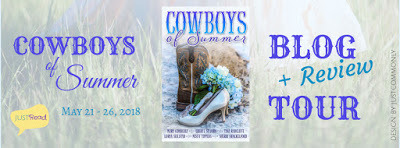 Short Blurb: As the summer weather sizzles, relax by the pool with stirring tales of handsome cowboys and the spirited ladies who wrangle them into romance. Six of Christian fiction's most beloved authors join forces to bring you a collection of humorous, romantic and heartfelt novellas set against the sultry heat of summer.
Short Blurb: As the summer weather sizzles, relax by the pool with stirring tales of handsome cowboys and the spirited ladies who wrangle them into romance. Six of Christian fiction's most beloved authors join forces to bring you a collection of humorous, romantic and heartfelt novellas set against the sultry heat of summer. 
Then, be sure to check out the Bookstagram Tour for The Accidental Guardian by Mary Connealy starting next week on @JustReadTours on Instagram!
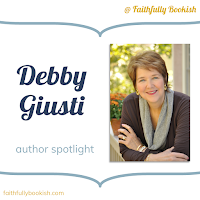
Stop by Faithfully Bookish for an interview with Publishers Weekly Bestselling Author Debby Giusti. She's talking about her favorite covers and giving away two books and a 2018 calendar/planner. Leave a comment to be entered in the drawing.
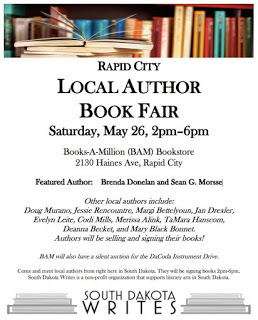
Are you planning to be in the Black Hills area on Memorial Day weekend? Stop by the Rapid City Books-A-Million store on Saturday, May 26, to meet Jan Drexler, along with other local authors!
Shout out to Seeker Mary Connealy, whose The Accidental Guardian made the 4/2018 CBA Bestseller's List!
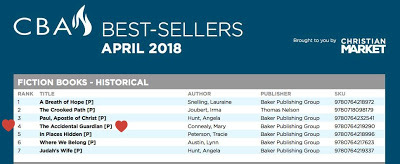

8 Signs You Might Be Over Plotting Your Novel by Janice Hardy at Fiction University
8 Tips for Creating Summer Writing Time by Jeanne Takenaka at Learn How To Write A
Novel
Evoking Emotions in Readers in a Masterful Way - Part 3 by C.S. Lakin at Live Write Thrive
Which Types of Readers to Use for Feedback by Annie Neugebauer at Writer Unboxed
How To Create A Compelling Book Cover by Joanna Penn at The Creative Penn
Cyber Attacks and How To Protect Your Computer and Data - 3 Part Series by Josh Moulin at My Story, My Way - An Indie Adventure
The Priority Parallax: Everything is Not as Important as It Appears by Kristen Lamb at Kristen Lamb, Author, Blogger, Social Media Jedi
Published on May 18, 2018 21:00
May 17, 2018
Layering In Texture and Emotion
 Hello everyone, Winnie Griggs here.
Hello everyone, Winnie Griggs here.Today I want to talk about my favorite part of the writing process. Once I finish the first draft of a book, I get to dig into the polishing phase. In addition to cleaning things up and making sure there are no loose threads I forgot to wrap up, this is the phase where I go in and look for ways to layer in texture and emotion.
Texture is about specificity. It includes the specific detail you need to include in order to convey feelings, color, atmosphere, setting – in other words, it’s about allowing your readers to immerse themselves in your scene with all of their senses. To do this you add descriptors and sensory words, but you do this with surgical precision – too much and you risk bloating your prose, too little and you miss opportunities to paint a vivid picture for your reader.

I always do better with examples, so I’m going to draw from the opening of one of my books, A Matter Of Trust.
Here is the stripped down, bare bones version:
“The preacher’s cat is an elegant cat.”“The preacher’s cat is a frightened cat.”“The preacher’s cat is a gregarious cat.”“Gregarious.” Toby drew the word out. “What does that mean, Ma?”Lucy Ames smiled down at the boy walking beside her. “It means to be sociable, to want to be part of a group of other folk rather than off by yourself all the time.” “Oh.”Lucy watched him mentally file away her definition. Her sweet little boy. She stepped over a root and paused while Toby studied a beetle. They’d been strolling along for about thirty minutes, and the creek crossing was just up ahead. Some of the choicest blackberries in the county grew there. Once they’d picked enough for Lucy to make a cobbler or two, they’d eat the picnic lunch she’d packed. A noisy commotion from somewhere up ahead caught her attention. Toby whispered, “What’s that?”I told you it was bare bones - not much sense of place or anything else here - mainly just talking heads.
Now here it is after I add in a texturing layer (noted in blue text):
“The preacher’s cat is an elegant cat.”“The preacher’s cat is a frightened cat.”“The preacher’s cat is a gregarious cat.”“Gregarious.” Toby drew the word out as he stretched the band on his slingshot. “What does that mean, Ma?”Lucy Ames smiled down at the boy walking beside her. “It means to be sociable, to want to be part of a group of other folk rather than off by yourself all the time.” Lucy pointed to the floppy-eared dog capering along beside them. “For example, Jasper here is very gregarious, but Mustard, for all his skills as a mouser, isn’t.” “Oh.”Lucy watched him mentally file away her definition. Her sweet little boy. Then she hitched her shoulder, shifting the weight of the basket she carried. It was a beautiful day here in the dappled shade of the woods, and they had an afternoon of picnicking and berry picking ahead of them.She stepped over a knobby root and paused while Toby and Jasper studied a large beetle lumbering up the side of a hickory tree. She inhaled, drawing in the scent of pine needles and just a hint of honeysuckle. They’d been strolling alongthis leaf-carpeted trail through the woods for about thirty minutes, and the creek crossing was just past the bit of heavy brush up ahead. Some of the choicest blackberries in the county grew there. Once they’d picked enough for Lucy to make a cobbler or two, they’d eat the picnic lunch she’d packed. A noisy commotion from somewhere up ahead caught her attention. Toby whispered, “What’s that?”This version is a bit better. Hopefully I’ve added enough detail here to give the reader a sense of place, enough to help her really visualize the setting.
But we can do better. Where Texture is all about grounding the reader in your scene, Emotion is about subtext, nuance, feelings, mood – in other words, it’s about allowing your readers to engage with the characters in your story.

Using the same scene, here is how I layered in the emotion (again in blue text):
“The preacher’s cat is an elegant cat.”“The preacher’s cat is a frightened cat.”“The preacher’s cat is a gregarious cat.”“Gregarious.” Toby drew the word out as he stretched the band on his slingshot. “What does that mean, Ma?”Lucy Ames smiled down at the boy walking beside her. The Preacher’s Cat was a favorite game of Toby’s. He collected new words like other six-year-olds collected rocks and bugs.“It means to be sociable, to want to be part of a group of other folk rather than off by yourself all the time.” Lucy pointed to the floppy-eared dog capering along beside them. “For example, Jasper here is very gregarious, but Mustard, for all his skills as a mouser, isn’t.” “Oh.”Lucy watched him mentally file away her definition. Her sweet, curious, intelligent little boy, so precious to her. Now that her mother was gone, he was all she had that truly mattered. Her smile faltered at that reminder, and she pressed a hand lightly against her bodice, comforted by the feel of her mother’s locket, cool against her skin. Then she hitched her shoulder, shifting the weight of the basket she carried. It was a beautiful day, tranquil here in the dappled shade of the woods, and they had an afternoon of picnicking and berry picking ahead of them.Time to concentrate on her blessings, not her losses.She stepped over a knobby root and paused while Toby and Jasper studied a large beetle lumbering up the side of a hickory tree. She inhaled, drawing in a feeling of serenity along withthe scent of pine needles and just a hint of honeysuckle. There was no need to hurry, no sense of urgency. After all, the walk was as much a part of the outing as the destination. They’d been strolling along this leaf-carpeted trail through the woods for about thirty minutes, and the creek crossing was just past the bit of heavy brush up ahead. Some of the choicest blackberries in the county grew there. Once they’d picked enough for Lucy to make a cobbler or two, Toby’s favorite treat, they’d eat the picnic lunch she’d packed. Afterwards, they could wiggle their toes in the creek, or look for cloud pictures, or--A noisy commotion from somewhere up ahead caught her attention. At the same time, Toby reached for her hand. “Ma,” he whispered, “What’s that?”
In the above version, I’ve added in the cues to let you in on what the characters are felling, how they view the world around them and each other. I’ve given you more reason to care about them and reason to feel things more deeply when their peace is shattered, which it will be in the next few paragraphs
Published on May 17, 2018 21:05
May 15, 2018
My Story Process
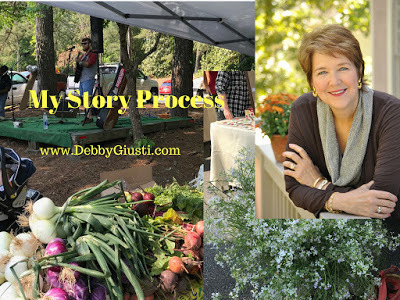 By Debby Giusti
By Debby GiustiOur town holds a weekly Farmer’s Market and folks in the surrounding area bring their produce, farm fresh eggs, honey, baked goods and handmade items to sell. I snapped some photos last Saturday of the beautiful vegetables and wares all of which brought to mind the verse I chose for my writing soon after publication.
It was not you who chose me, it was I who chose youto go forth and bear fruit.John 15:16
As a fiction author, my fruit is my writing--the stories I create. In Seekerville, we discuss various aspects of the writing craft and techniques that improve production and make our characters more engaging and our plot more compelling. Today, let’s look at the process of pulling a story together.
When writers mention their story process, I often think of whether they’re a plotter or pantser, use Schrivener or follow one of the how-to techniques, like James Scott Bell’s Write Your Novel From the Middle.
In this blog post, I’m veering away from those traditional processes and revealing the stages I use to produce fruit and go from initial concept to completed manuscript.
As with anything, a story begins with an idea…
The Lightbulb MomentEureka! I get an idea. Often it’s visual, a picture in my mind’s eye, such as a still shot of an opening scene.
The IntroductionsA character—either the hero or heroine—has tapped into my subconscious and plants that opening glimpse of a story. I need to get to know her better and find out what she’s trying to tell me. Some characters are forthright. Others refuse to divulge information. I woo those elusive characters with chocolate and long walks or by staring into space until they start to reveal themselves to me.

BookendsThe opening, inciting incident draws the reader and the editor or agent into the story so I start the action with a BANG! Similarly, I need some idea of how the story will end. Not the resolution as much as the climax, the battle between my heroine and her nemesis/villain/antagonist.
BackstoryWhat has happened in the hero or heroine’s life to bring him or her to that inciting incident? Who is this heroine and why is she in this particular situation? Am I interested in the character? The Big ThreeI start to dig, needing to uncover the character’s goal, motivation and external conflict. What does she want/need, why does she want it and what’s stopping her? Like a woman using a grocery scale, I weigh the GMC to determine if it’s worth the time and energy needed to write the story.
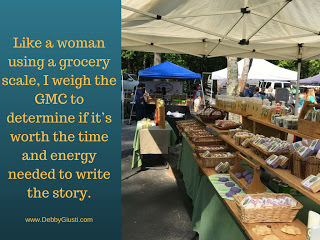
The Pearl of Great PriceThe special treasure that also needs to be unearthed is the internal conflict, which, in my opinion, will make or break a story. What’s the character’s wound? What’s holding her back from living life to the full? What keeps her from being the person God created her to be?
Begin to WriteI start with the inciting incident and introduce the love interest as soon as possible in the first or second scene. (Note: If the love interest doesn’t appear until the second scene, I mention his or her name or allude to it in the initial scene. The love interest also needs a worthy GMC.)
Set the Ball in MotionThe action in the first chapter propels the hero and heroine into the story. Chapter Two moves that story to a no-turning-back point that hooks the reader at the end of Chapter Three.
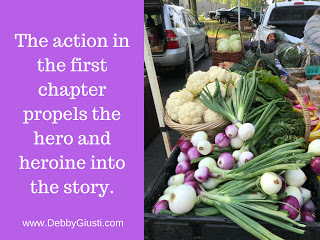
Build the FrameworkLike a carpenter, I build a fast frame on which to hang the various story elements. That’s my synopsis. In my opinion, the synopsis is an invaluable tool for the writer that shows how the story will fit together. The synopsis leads me through a series of steps that go from point A—the inciting incident at the onset of the story—to point Z—the resolution and/or epilogue. No matter how rough, I need that basic frame before I start to write the remainder of my story.
Hit SEND!I pray before emailing the first three chapters and synopsis to my editor and then breathe a huge sigh of relief. The most difficult part is done…or so I think. I usually give myself a day or two away from the story as reward for my hard work thus far. False EuphoriaI feel optimistic about the proposal and falsely believe the story will practically write itself. Proposal AcceptedMy editor gives me the go-ahead. I pull out my AlphaSmart and start to write the next chapter. My euphoria plummets. Writing is hard work. I review the synopsis that I thought was so brilliant. I slowly type one word after another and question how I can call myself a writer.
My Trusty TimerI grab my kitchen timer and set it for 30 minutes. The tick-tock-tick spurs me on. When the timer dings, I stand and stretch, get a drink of water and grab something to eat. I set the time for 30 more minutes and type more words.
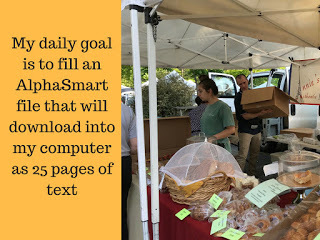
The ChallengeMy daily goal is to fill an AlphaSmart file that will download into my computer as 25 pages of text. I break the writing into 30 minute segments, which means I need six, 30-minute writing sessions to create roughly 5,000 words a day.
Ride the Roller CoasterSometimes I have bursts of creativity when my fingers fly over the keyboard. At other times, I struggle to pull a phrase together. The scroll of the AlphaSmart screen becomes hypnotic and lulls me to sleep. I eat to stay awake. I brew tea and drink cup after cup. I chew gum, sometimes a pack a day. I stare out my window and wish I was anywhere but sitting in my house with my AlphaSmart.
Push to The EndI keep writing without editing or rereading until I type THE END.The rough draft is done. I’m happy, but despair follows all too soon as I realize how rough the draft really is.
RewritesI set a two-week deadline to work though the story in three or four editing sweeps, tackling 50 to 75 pages a day. I don’t want picture perfect at this stage. Instead, I tidy up the biggest problems first, then do a second sweep to clean up more debris. By the third review, I begin to see the pages come to life and am optimistic about the story.
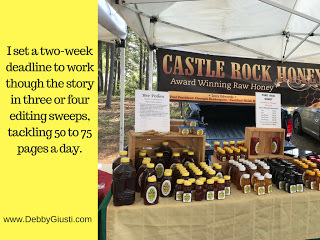
The Worst EverAround this time, I invariably go through a “This is the worst story I’ve ever written” phase. My husband and children remind me that I always hate the story, hate the plot, hate the writing, and most of all, hate the author.
Deep EditsI roll up my sleeves and tackle the remaining problem areas. This rewrite requires patience and stamina. More gum, more tea, less sleep. No outside distractions allowed.
Total ImmersionI enter totally into the story. Live it, breathe it, eat it, sleep it, then pray and repeat the process.
Final ReadI read the story in web format or change the font to pick out typos and errors. Make more changes.
Print Hard CopyGive to Beta Reader. Make changes. Read hard copy. Make more changes.
Final ChecksReview chapter numbering. Add scripture and dedication. Write Dear Reader Letter. Type cover letter to editor.
Pray! Gulp! Hit SEND!

I mentioned a few places where I pray, but in reality, I pray almost constantly as I’m writing a story. I start the day with The Writer’s Prayer and often stop to call on inspiration from the Holy Spirit when I’m struggling to get words on the page.
Let’s discuss your fruit and your writing process. Can you “see” your story before you start to write? Do you understand story and how the parts fit together? Do you invariably have holes in your plot? Do you struggle with sagging middles? Are you too verbose or do you leave out major turning points? Do you build a framework before you start to write? Do you write a synopsis early on or after your story is written?
Leave a comment to be entered in a drawing for the first two books in my Amish Protectors series, AMISH REFUGE and UNDERCOVER AMISH, along with a 2018 calendar/planner.
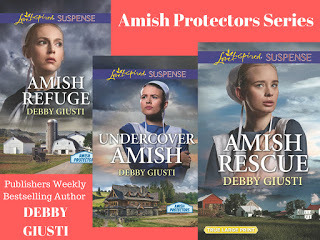
I’ve brought scrambled eggs, hash brown potatoes, cheese grits, bacon and biscuits for breakfast. The coffee is hot, so is the tea. Get some food and pour a cup of your favorite beverage as we delve into your story process.
Happy writing!
Wishing you abundant blessings,Debby Giustiwww.DebbyGiusti.com
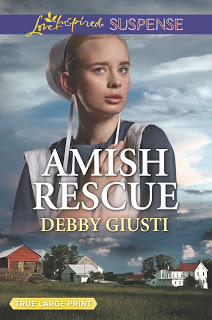 Amish RescueBy Debby Giusti
Amish RescueBy Debby GiustiHiding with the Amish
Englischer Sarah Miller escapes her captor by hiding in the buggy of an Amish carpenter. Joachim Burkholder is her only hope—and donning Plain clothing is the only way to keep safe and find her missing sister. But for Joachim, who’s just returning to the Amish, the forbidden Englischer is trouble. Trapping her kidnapper risks his life, but losing Sarah risks his heart.
Order HERE!
Watch for AMISH CHRISTMAS SECRETS, book 4 in theseries, coming October 2018.
Published on May 15, 2018 21:00



